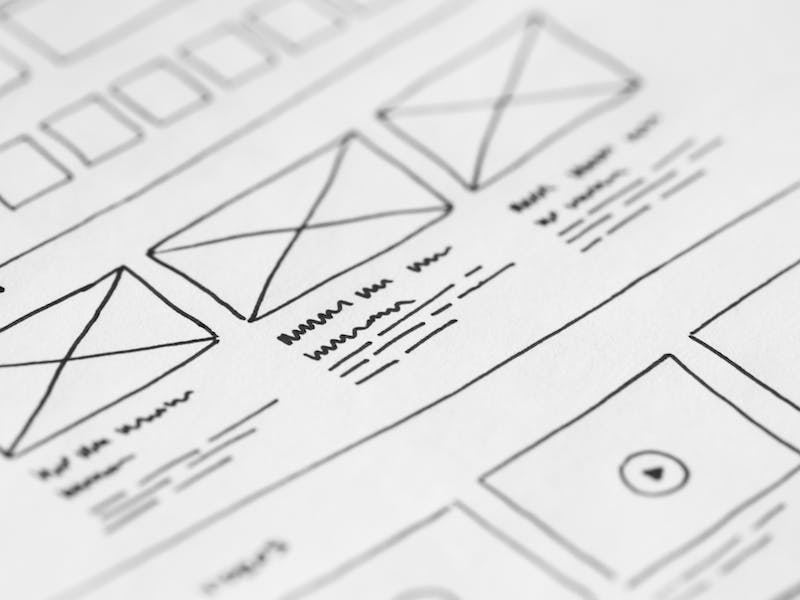Branding is the practice of developing an identifiable and lasting image for your business, including the use of logos, color schemes, typography and other design elements to establish its distinct presence within its market.
Website branding involves designing and creating content to reflect your company’s brand personality, while offering users a smooth user experience. Branded elements like favicons, colors and fonts may also be utilized.
Colors
Color can evoke specific emotions and help a brand establish its identity while shaping user interaction with websites. web development company in coimbatore must understand how colors impact people emotionally to select the ideal hues to set a specific atmosphere and guide users throughout their experience. Color has also been proven to significantly impact brand recall rates; studies show an up to 80% increase in overall recall for certain brands when colored schemes are utilized effectively.
Understanding how different colors affect user emotions is vital to creating websites that elicit positive responses and convey messages effectively. There are various kinds of color schemes, such as complementary, analogous and triadic colors; complementary colors lie opposite one another on the color wheel, creating high contrast and vivid combinations when used together; analogical colors share an undertone creating harmony and subtlety when used together; while triadic colors occupy all three spaces on this spectrum.
Triadic color schemes utilize three colors evenly spaced around the color wheel for maximum contrast and harmony, creating an elegant and professional aesthetic. Apple’s website employs such an arrangement using shades and tints of one base color – providing a simple yet clean aesthetic design.
Color can also be used to emphasize specific elements on a website. For instance, call-to-action buttons may be highlighted with specific hues to draw visitors’ attention and encourage them to complete desired actions on page; this practice is known as accent coloring.
There are color groups that evoke certain emotions: warm colors such as reds, oranges and yellows are associated with warmth, energy and excitement; cool hues include blues and greens which evoke calmness and clarity.
Pink represents femininity and tenderness; therefore it is commonly used to appeal to female audiences on baby products and romance websites. Purple represents wealth and royalty; thus making it suitable for wedding or high-end jewelry websites. Yellow can help promote optimism and happiness on websites; however overuse could make the user irritable [1].
Brown conveys dependability and ruggedness, making it an excellent choice for outdoor gear and home improvement sites. But when used carelessly it can also show a lack of sophistication or appear outdated or dull.
Typography
Typography is the art of organizing words to communicate a particular message or emotion. Combining different fonts, sizes, styles and colors elicit specific reactions in people which makes typography one of the most powerful tools when designing websites. A well-crafted typography will create an unforgettable brand personality while encouraging customers to interact with your business or purchase its products or services.
Typography can often be the first thing that catches people’s eyes when visiting websites, making it an integral component of website creation. Typography should help create visual hierarchy and ensure the most essential information is prioritized – helping visitors understand how to navigate your website in order to accomplish their goals more quickly.
Typography is also essential because it communicates the voice and tone of your company. By choosing fonts carefully, you can convey excitement, elegance or even sexiness while at the same time projecting professionalism and trustworthiness – something to bear in mind when selecting fonts for your website to ensure customers trust that what it promises will actually happen.
Make sure that your typography is legible – ensure the text is large enough and there is enough contrast between font colour and background to easily read, leaving enough white space and selecting a style suitable for its context (such as script fonts which might work well for single words or logos, but become difficult to read when used throughout an article’s body text).
Typography should be flexible enough to work across platforms and devices, particularly mobile phones. Users will typically access your site on mobile phones, so reading text without issues should not be an issue when accessing from those devices. A fluid layout that scales across screen sizes as well as media queries that adapt font sizes depending on device width are effective ways of accomplishing this goal.
Visuals
Visuals are an integral component of branding. From logos and colors, to fonts and font sizes, visuals attract the eyes and attention of your target audience – making it more likely they remember you as a brand. Furthermore, visuals allow brands to distinguish themselves from competitors beyond price wars and product features by drawing audiences in and creating connections beyond price wars or product features.
Your brand identity is the visual expression of your company’s personality and values, from visual marks to voice tone, message tone and stance. A strong brand image can affect all areas of business from brand awareness through digital marketing to customer reviews – therefore it’s essential that web designs adhere to brand identities in order to deliver an experience that resonates with visitors while building trust between customer interactions and trust building activities.
Understanding that visual elements may change over time is key, yet making major alterations should not occur too frequently. A consistent brand will build familiarity among your audience over time and lead to long-term business growth; making too many alterations may lead to confusion or lead them to associate you with something other than what they originally expected.
Visuals make an immediate and lasting impression of any brand and have a tremendous effect on consumers’ perceptions of them. Today’s marketing and digital landscape makes it more essential than ever to distinguish yourself from your competition and look distinct than ever. Capturing audience attention through imagery helps you communicate why your product/service stands out and solve their needs more efficiently than words alone can do.
Your logo, color palette and typography form the backbone of your brand identity; but your visuals are what truly set your business apart from competitors. Utilizing unique images that reflect the spirit and style of your brand can create an enduring brand presence online and with customers.
As an outdoor landscape photography company, your visuals should include mountain ranges, forests and lakes as subjects of your photos. Furthermore, if your brand specializes in products and services designed to bring aspirational lifestyles closer to its target market through lifestyle-enhancing products or services, use visuals as evidence of its work in action.
Content
Content is one of the key elements to consider in branding and web design, providing customers with information about who you are, what you do, why you do it and establishes credibility while building trust among potential clients. Furthermore, your content can help enhance search engine performance and generate leads.
To ensure that the content on your website bolsters and strengthens your brand, it should be well written, easy to navigate and adhere to a consistent layout. Incorporating a clear call to action that drives visitors toward conversion will increase traffic and conversion rates while an expertly designed site also helps enhance readability by optimizing font selection, size and spacing to provide a pleasant user experience.
Branding should go beyond logos and color schemes – it involves all aspects of how people perceive a business from visual marks, voice/tone, to language used – so make sure your web design company understands your brand as it translates online.
Websites without an obvious and distinct brand identity are useless; in fact, you might as well not exist at all. By reflecting your brand identity accurately and inviting users in to explore, attracting users with similar tastes to convert into paying customers or clients will increase significantly.
Content marketing’s goal is to produce valuable, pertinent information that provides answers and solves issues for your target audience. Ideally, this content can also help your business thrive; however, its usefulness depends upon accessibility: an unattractive or difficult-to-navigate website makes it harder for potential customers to locate the information they’re searching for and may discourage repeat visits altogether.
Web design and content marketing should work hand in hand to further your business goals and ensure success. By prioritizing accessibility, user experience, brand consistency and brand consistency you can create an effective digital environment which better represents your branding, enhances search engine optimization as well as increasing engagement and conversions.





